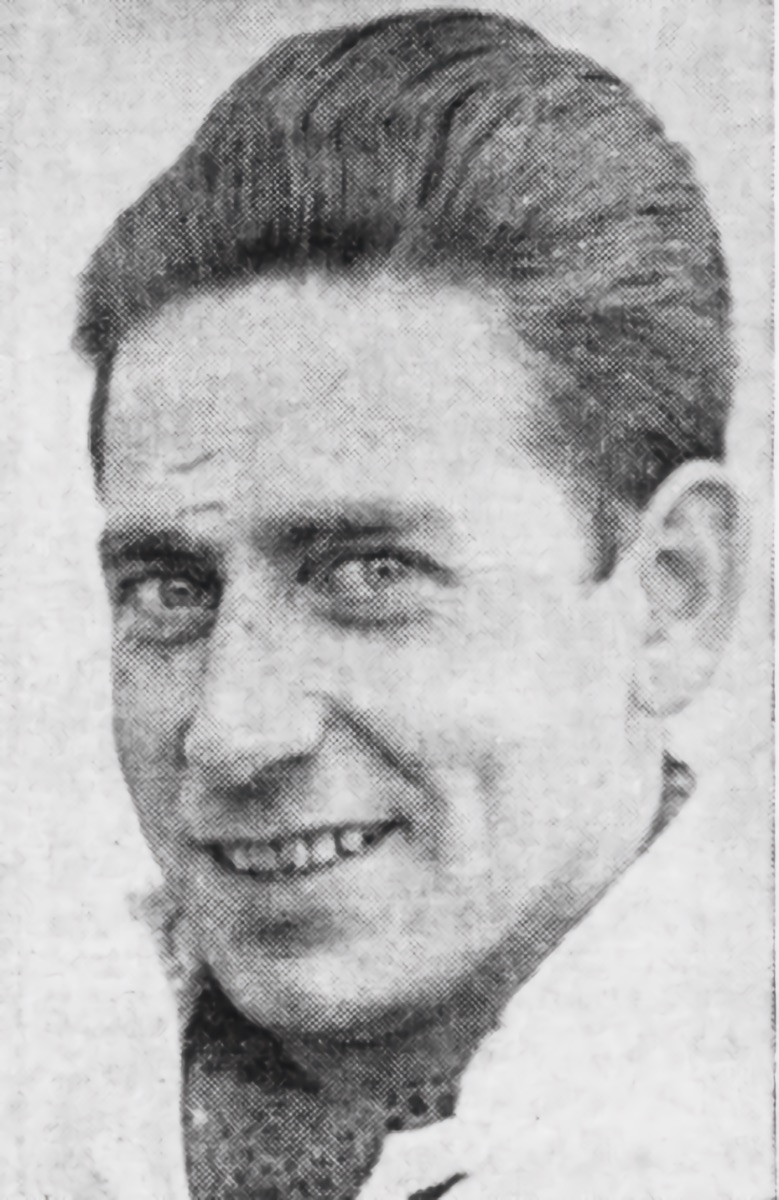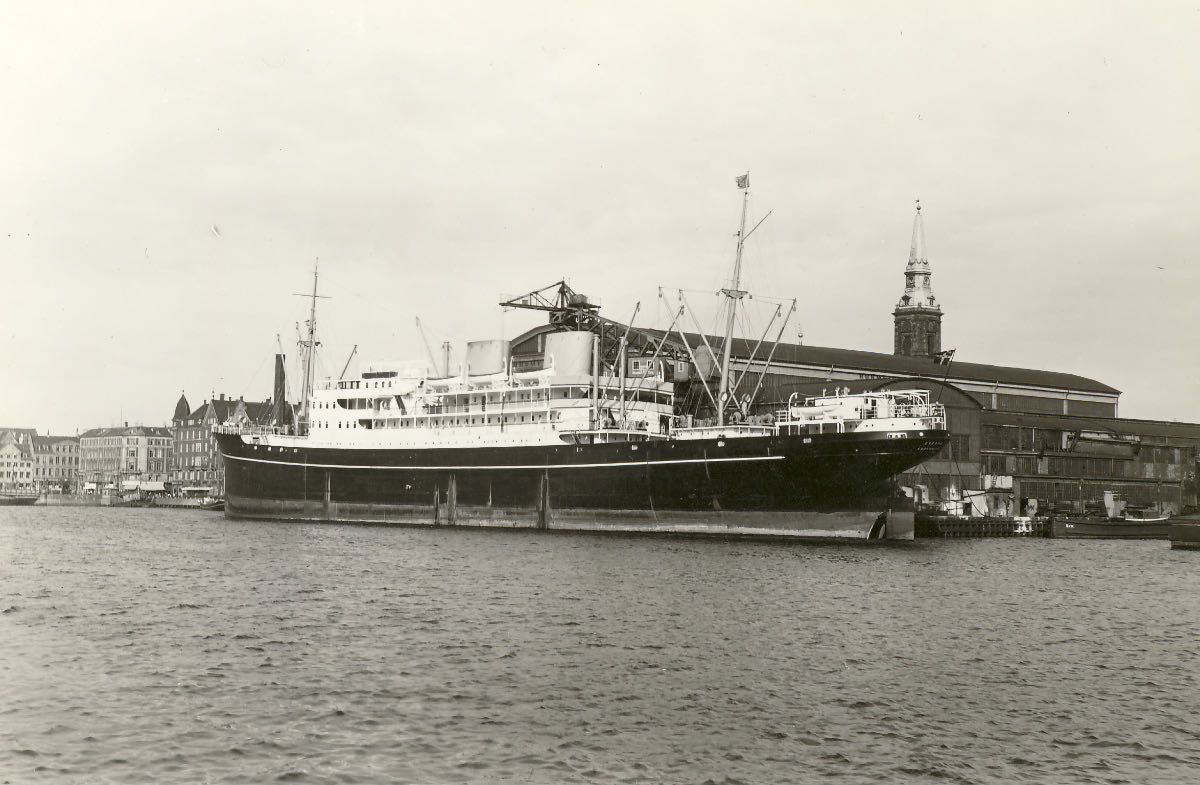Ib Anders Hedegaard-Schou
(1914 - 2002)
Profile
Ib Hedegaard-Schou was part of the merchant navy when Denmark was occupied in April 1940. He volunteered for the Norwegian Air Force in Canada until 1944. He enlisted in the U.S. Army in 1946 and served until May 1947.
Ib Anders Hedegaard-Schou was born on 13 June 1914 in Copenhagen, to son of Carl Christian Hedegaard-Schou and Thora Antonette Frederikke-Schou (née Rasmussen).[1] Hedegaard-Schou’s father was a baker and he would be trained in this trade as well. The family moved to the town of Svendborg in 1919.[2] They seem to have moved from Svendborg in 1926/27.[3] There is little information available on his early life.

Leaving Denmark
Hedegaard-Schou was engaged as a scullery boy on-board the MS Europa in Copenhagen in September 1939. The vessel left Copenhagen for Vancouver on the 8th, that is, a week after the outbreak of war in Europa. While harbouring in San Francisco Hedegaard-Schou had the opportunity to visit the Golden Gate International Exposition (GGIE). The exhibition, a World’s Fair was held at San Francisco’s Treasure Island.[4] Europa returned to Copenhagen in December 1939. As the Gdynia America Line had stopped service because of the war, the East Asia Line expected an increased demand of passenger transport between Scandinavia and New York. Therefore, it was decided to dock in New York both the outbound and on the return journey.
Europa left Denmark for the last time on 19 January 1940 and began the return journey from Vancouver to Copenhagen in the beginning of March 1940. The vessel left Puerto Cabello in Venezuela on 5 April 1940 and learned about the German invasion of Denmark on its way to New York, where it arrived on 11 April 1940. From New York Europa proceeded to Halifax where it was taken over by the Canadian authorities on 26 April 1940.[5]
Among the crew on this journey were five seamen who would later join the Royal Norwegian Air Forces in Canada: chief steward Arne Nicolajsen, stewards Anker Grønning Jensen, Tage Friis Christensen and Clement, and finally sculler Ib Anders Hedegaard Schou.[6] Little did he and the other members of the crew know that the vessel carried part of the Danish gold reserve which was moved to safety from the war in Europe in the Federal Reserve in the United States.[7]

Onboard Europa—now under Canadian administration—the crew became increasingly frustrated as they had not yet been paid. She vessel sailed from Halifax to Liverpool and as she returned to Montreal, Hedegaard-Schou chose to be discharged. The lived in Canada the following two months in the hope that he would obtain permission to stay in Canada.
Trying to remain in Canada
He was engaged onboard the SS Asbjørn and made another Atlantic crossing with her. Back in Montreal he got the captain’s permission to sign off and the Canadian Mounted Police’s permission to remain in Canada. This was given in November 1940. He worked for 3-4 months as a baker, presumably in Montreal. He was told, that the permit was not sufficient to remain in Canada, and went to the Police to be sure. It was not and, as a consequence, he was jailed and kept in prison for two monts. At the release, he was engaged onboard the SS Curacao. He signed off in Liverpool on 25 April 1941.[8] The vessel seems to have made two Atlantic crossings onboard this vessel before.[9]
In Norwegian Service
In England, Hedegaard-Schou was sent to the Royal Patriotic School for interrogation and released two days later. He was in contact with the Recruiting Office, Danish nationals, while in London. Captain Iversen, who was the Danish officer in charge realised that he had seemed to have volunteered for the Norwegian forces on 20 March 1941 without prior knowledge of the effort taken to create a Danish contingency within the East Kent Regiment (the Buffs).[10]
It is not clear from the information available, how and when Hedegaard-Schou returned to Canada, but he entered into service in the Norwegian Air Force in camp Little Norway in Toronto on 15 June 1941. He served as a baker in the camp.
In April 1943, the a list of servicemen for possible service overseas as ground crew was prepared by the Norwegians. Hedegaard-Schou was kept in Canada for special duties.[11] In January 1944, the personnell list shows him to have been promoted to Corporal (Korporal) and serving in the kitchen and mess section of Little Norway in Muskoka.[12] He served in the air force until 9 March 1944 at which point he transferred to the Norwegian Navy.[13]
Serving in the U.S. Army
On 11 August 1945, Hedegaard-Schou arrived to New York from Godthaab (now Nuuk) in Greenland onboard SS Linda. He had been engaged on 2 August 1945 in Greenland, but it is not clear for what purpose he was there. He was discharged from the ship in New York.[14] Linda was a Danish ship which had been laid up in Las Palmas on the Canary Islands from April 1940 to March 1944. It carried out several passages between Greenland and Canada in 1944-45.[15]
Hedegaard-Schou was registreren in the draft in United States in May 1946. He gave then Lt Leif Bangsbøll with whom he had served in the Norwegian Air Force, and who had since joined the U.S. Army. Bangsbøll may have inspired him to volunteer for the U.S. Army as well.[16] In any case, he enlisted as a Private in the US Army on 10 June 1946 (42281243). He served as a baker at Fort Lawton, Washington, and was promoted to Private First Class during the course of his service. He served until 4 May 1947.[17]
Hedegaard-Schou remained in the United States after discharge. He was naturalised as a citizen of the United States on 14 February 1949.[18] He died on 3 September 2002 in Texas, USA.[19]
Endnotes
[1] DNA: Parish register, København, Skt. Anna sogn.
[2] DNA: 1921 Census of Denmark.
[3] Nielsen, Svendborg Vejviser og Skattebog, 1926-1927.
[4] De Tre fra Bagsiden: Tre fra “Drenge-Kahytten” om bord paa et Motorskib et Sted i Frihavnen, B.T., 13. januar 1940, p. 16.
[5] NA: BT 389/12/216.
[6] Ancestry: Washington, Passenger and Crew Lists, 1882-1965.
[7] Denta (2015). Guld og bedrag : de risikerede alt for at snyde nazisterne.
[8] DNA: Privatarkiver, Iversen, W. Michael, kaptajn. Materiale vedr. De Frie Danske i London (1939-1947).
[9] Arnold Hague Ports Database, http://www.convoyweb.org.uk (accessed on 15 May 2023).
[10] DNA: Privatarkiver, Iversen, W. Michael, kaptajn. Materiale vedr. De Frie Danske i London (1939-1947).
[11] NNA: Forsvaret, Flyvåpnenes treningsleir 1940-1945, V/L0038: Ekspedisjonskontoret. 8. Personellkontoret, 1940-1945, 8/III g, Movement from Canada to U.K. 1944 og 1945.
[12] NNA: Forsvaret, Flyvåpnenes treningsleir 1940-1945, V/L0038: Ekspedisjonskontoret. 8. Personellkontoret, 1940-1945.
[13] DNA: Udenrigsministeriets gruppeordnede smager, 48.Y.90, Norge/Canada.
[14] Ancestry: New York, U.S., Arriving Passenger and Crew Lists (including Castle Garden and Ellis Island), 1820-1957.
[15] Arnold Hague Ports Database, http://www.convoyweb.org.uk (accessed on 15 May 2023).
[16] Ancestry: U.S., World War II Draft Cards Young Men, 1940-1947.
[17] Ancestry: U.S. Veterans' Gravesites, ca.1775-2006.
[18] Ancestry: New York, Index to Petitions for Naturalization filed in New York City, 1792-1989.
[19] Ancestry: U.S. Veterans' Gravesites, ca.1775-2006.